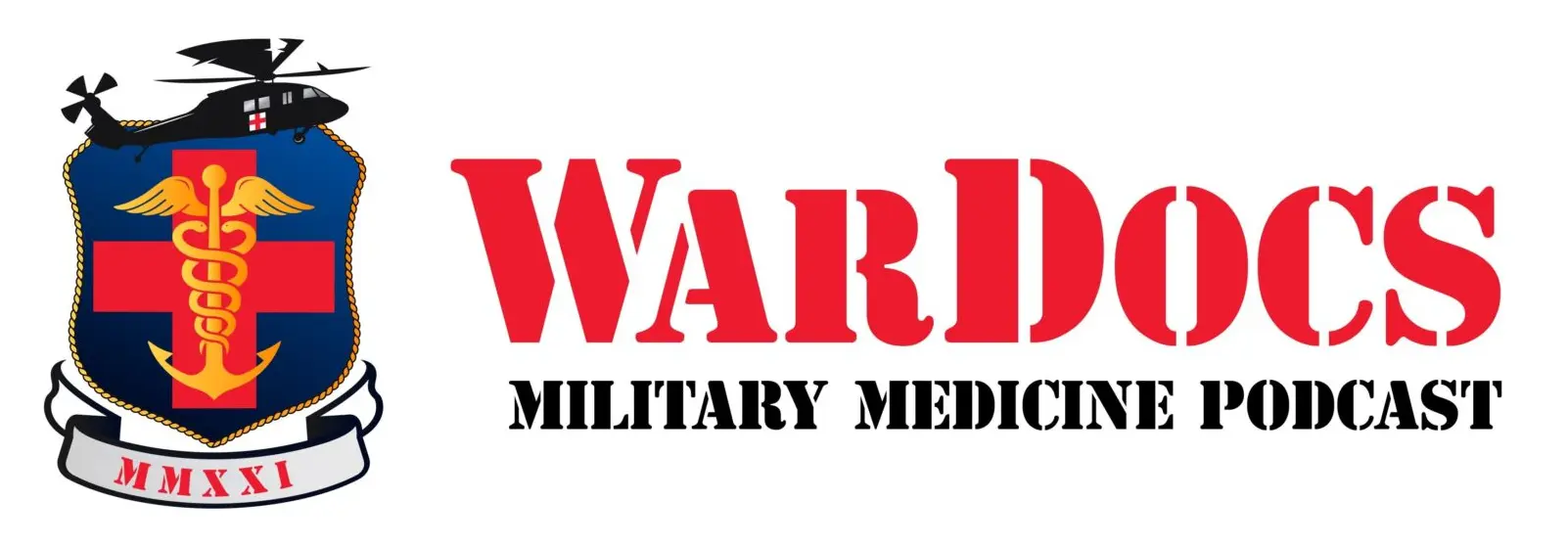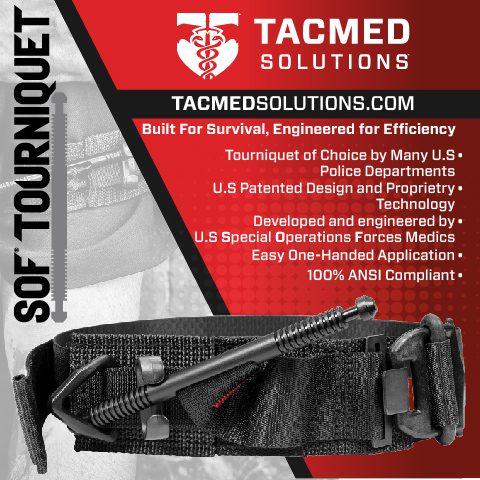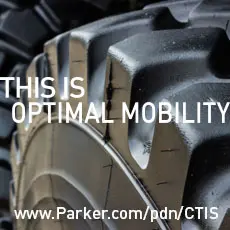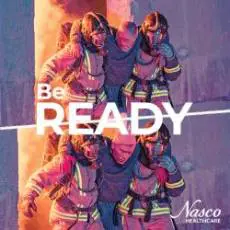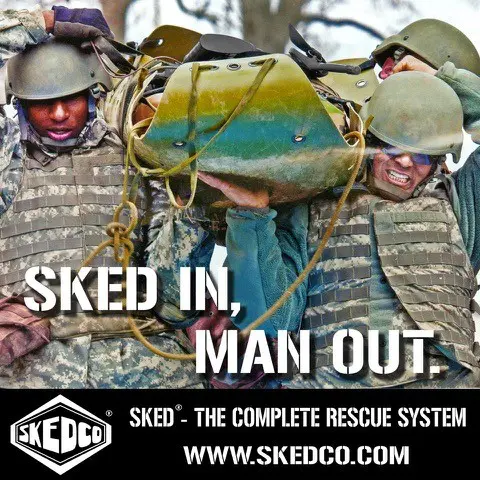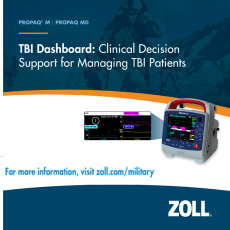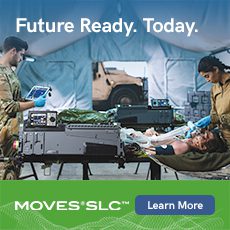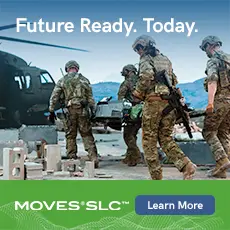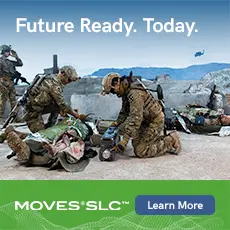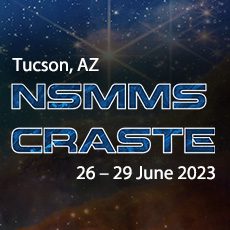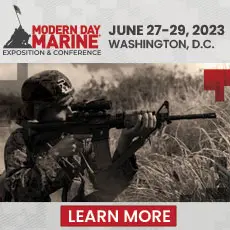Maturing Next-Generation Mobile Ground Combat
U.S. Army Combat Capabilities Development Command (DEVCOM) Ground Vehicle Systems Center (GVSC) and Army Futures Command (AFC) Next Generation Combat Vehicles (NGCV) Cross Functional Team spoke with Armor & Mobility on efforts to facilitate an evolution in manned and autonomous ground combat platform development in support of future Multi-Domain Operations (MDO).
From Armor & Mobility, Fall 2022
Mr. Blendi Berati, Program Manager for the Crew Optimization & Augmentation Technologies (COAT) program, U.S. Army Combat Capabilities Development Command, Ground Vehicle Systems Center
Mr. N. Joseph Kott III, Senior Science & Technology Advisor, Next Generation Combat Vehicles Cross-Functional Team, U.S. Army Futures Command
Mr. Jack Hartner, Branch Chief for Robotic and Autonomous Software Research, U.S. Army Combat Capabilities Development Command, Ground Vehicle Systems Center
A&M: What is the future vision for armored vehicles, and what will their role be on the future battlefield?
Berati: Big picture, the future battlefield will be extremely hyperactive and lethal. Any future armored vehicle will have to depend on more than just armor for survivability – it will need to be well-protected, but it will also need to be faster, quieter, more aware, and more lethal. They’ll need to be able to respond faster than ever before, which will require greater situational awareness than current systems allow.
In terms of role, the value of carrying heavy weapons on a well-protected platform is probably not going anywhere. In addition, we don’t expect legacy systems to disappear overnight. Initially, we’d expect future vehicles to serve in specific formations, and in some cases potentially alongside legacy vehicles, in theatres of operation that require their enhanced capabilities.
A&M: What advantages will future armored vehicles offer over legacy systems, and what are some barriers to realizing that potential that must be overcome?
Berati: U.S. Army Combat Capabilities Development Command Ground Vehicle Systems Center (DEVCOM GVSC) is proud of the engineering and technological support, via several of its S&T programs, it provides to the whole Army’s modernization enterprise, especially in the ground vehicle domain led by the U.S. Army Next Generation Combat Vehicles Cross-Functional Team (NGCV CFT).
GVSC’s holistic approach to ground vehicle technology development in support of NGCV, including collaboration with industry and academia, using innovative techniques in concept development, applying foundational architecture-based designs to reduce vehicle modernization costs, and leveraging relationships with DoD’s various acquisition and technology development agencies, make GVSC the center-of-mass for NGCV technology development.
NGCV is seeking to provide capable replacements to the Army’s aging fleet of legacy armored vehicles and introduce new technologically superior capabilities that will deliver lethality, range, maneuverability, reliability, and adaptability above and beyond what the current vehicles can provide, on the battlefield of the future.
One of the NGCV priorities is the Optionally Manned Fighting Vehicle (OMFV), a replacement for the decades-old Bradley platform. The Army is seeking a transformational increase in warfighting capability, not simply another incremental improvement over the current legacy system. As part of an Armored Brigade Combat Team (ABCT), the OMFV will not fight alone, but rather as part of a section, platoon, and company of mechanized infantry.
OMFV program is leading the Army in the use of digital engineering, Modular Open Systems Architecture (MOSA), Advanced Manufacturing processes, and developing maintenance and logistics support concepts in conjunction with vehicle design. Army’s commitment to open systems architecture for the OMFV program will allow for easier integration of future technologies into the platform, something that legacy systems lack, which makes incremental modernization efforts costly and cumbersome for the legacy platforms.
One of NGCV novel platforms, providing a capability that does not currently exist, is the Robotic Combat Vehicle (RCV). The RCV is an Army-Wide solution to delivering lethality by leveraging Artificial Intelligence (AI) and autonomy for unmanned vehicles that every unit in the Army can tailor to its mission set.
Mobile Protected Firepower (MPF) is another program within the NGCV platform, an armored vehicle providing precise, large-caliber, long-range direct fire. MPF represents a new capability, not offered by any of the legacy platforms, which improves the infantry’s ability to neutralize prepared positions, heavy machine guns, and adversary armored vehicle threats while operating on challenging and restrictive terrain.
The battlefield of the future, fought across all domains, will become increasingly complex and proliferated with intelligent agents such as smart sensors and myriad of unmanned ground and aerial vehicles; and as such there’s a crucial need to develop tools that help vehicle crew operators to rapidly gather information, analyze and coordinate in order to quickly adapt to any obstacles or dilemmas. That is one of the technological barriers to future warfare; all of these new vehicle platforms, equipped with the latest in autonomy and AI will still need to be controlled by Soldier crews in various formations. Facilitating the interaction between Soldiers and autonomy, especially in Manned-Unmanned Teaming (MUMT) maneuvers is an important part of the problem space when working to develop the next generation of combat vehicles. This is what GVSC’s Crew Optimization & Augmentation Technologies (COAT) program is working to solve.
The COAT program has teamed up with academia, private industry as well as several DEVCOM laboratories & centers such as the Army Research Laboratory’s Human Autonomy Teaming Essential Research Program and the Soldier Center to provide optimized crew interfaces and technologies that maximize soldier and system performance while reducing crew cognitive load and overall crew manning requirements of various NCGV platforms. Additionally, COAT is working to develop flexible, adaptive interactions between soldiers and autonomous assets of future NGCV programs to enable coordinated maneuvers for mixed manned-unmanned formations in the face of dynamic mission environments and adaptive adversaries.
A&M: Please provide some background regarding the inception and evolution of the Army’s NGCV program effort, along with primary reasons for its development.
Kott: The Optionally Manned Fighting Vehicle (OMFV) will provide the Army with the capabilities required to defeat a future peer competitor. The OMFV will bring a transformational increase in warfighting capability to an Armored Brigade Combat Team. It is not simply another incremental improvement over the current Bradley Fighting Vehicle. As part of an armored brigade combat team (ABCT), the OMFV will not fight alone but will operate as part of a section, platoon, and company of mechanized infantry.
One of the distinctive of OMFV is its development process, where the Army developed nine characteristics of need — survivability, mobility, growth, lethality, weight, logistics, transportability, manning, and training – and then asked the industry for its best solutions in those areas. The Army and industry went through several iterations of evaluating those solutions, culminating in a series of Soldier Touchpoints so that we could validate the proposed solutions. Through this process, the Army was able to develop requirements for the OMFV that are feasible and achievable. Further, OMFV is being developed with a Modular Open System Architecture which will allow technologies that may not be ready for fielding today to be added to the vehicle when they are ready.
Ultimately, OMFV will provide our ABCT Soldiers the vehicle they need to fight and win on tomorrow’s battlefield.
OMFV currently has an RFP out for the development of a detailed design and production of prototype vehicles; up to three industry partners will be selected in 3Q FY23.
A&M: What are the characteristics that make NGCV new, novel? What will be the role AI, autonomy, and robotics in NGCV?
Kott: OMFV is being designed with a Modular Open System Architecture. We know that technology will continue to evolve. While we will build the OMFV with the best technology available today, we know that new technologies will continue to come online. By using a MOSA approach, we will be able to integrate new technologies as they mature. Artificial intelligence and autonomy are technologies that continue to mature and will be incorporated into the design as appropriate.
Robotic Combat Vehicles are another signature line of effort for the NGCV CFT. In July-August 2022, an RCV Manned-Unmanned Teaming Soldier Operational Experiment was conducted with the support of the Soldiers of 1-7 Cav at Fort Hood. During the SOE, Soldiers utilized two different RCV prototypes and an RCV surrogate to conduct platoon and troop-level exercises. Lessons learned at the SOE will inform future decisions about the possibility of moving RCVs to a program of record.
A&M: In terms of enhanced capabilities in future battlefield comprehension, what do you see as the primary hurdles for crew operators in maximizing NGCV combat effectiveness?
Berati: The future for NGCV involves Soldiers operating under closed-hatch conditions, completing extremely complex missions against a near-peer adversary on a hyper-lethal battlefield where decisions must be made very quickly. This means that Soldiers are going to have to process lots of complicated information quickly in order to understand it and respond effectively. At the same time, the NGCV vehicles will be crewed at roughly half the Soldier-system ratio of legacy vehicles (2:1 in NGCV, versus 4:1 in Abrams or 3:1 in Bradley). So, fewer Soldiers to complete a more complex mission.
The combination of crew reduction and closed-hatch operations will have serious implications for Soldiers’ ability to maintain situational awareness – they’ll need to work harder to maintain the same battlefield comprehension. Our partners at DEVCOM ARL have conducted research on crew workload in armored vehicles, concluding that AI, autonomy, and robotics can help alleviate some of the workload burdens for reduced crews, enabling them to fight effectively. Integrating these types of technologies into ground vehicles brings its own challenges, and we will need to help autonomy be a better teammate for human Soldiers.
AI decision support and data reduction tools can help Soldiers process information more efficiently, whereas autonomous mobility and targeting systems can help free them up to act. When machines make decisions, they use information differently than humans – differences in the decision-making process and outcomes can make it difficult for Soldiers to trust the machine. Sometimes skepticism toward a machine’s abilities is warranted, so when we talk about trust in a system, we emphasize that we are aiming to produce calibrated trust in a system, where the user understands the system’s strengths and weaknesses well and uses it appropriately.
A related challenge is adaptability – general intelligence has yet to be achieved for AI-enabled systems. This means that machines are not yet capable of reasoning their way through problems and applying common sense. Adapting the behavior of AI, autonomous, and robotic systems to changes in context, including the environment, the adversary, and tactics, currently requires a great deal of resources. Common approaches for adapting a machine’s behavior include reprogramming, in the case of an expert system, or using a deep learning approach that allows the machine to learn on its own. Expert systems require lots of human attention to update, whereas deep learning approaches require large amounts of data – in both cases, AI, autonomy, and robotic systems will need help adapting to the types of rapid change expected on future hyperactive battlefields.
Last, battlefield comprehension is not just a runtime consideration – we need to plan and learn in order to maintain an understanding of the overall picture. When we start sharing some decision-making authority with AI, autonomy, and robotic systems, we have to start looking at those systems as teammates with inherent strengths and weaknesses. Future systems will generate massive amounts of data – not just diagnostics information from the vehicle, but also crew-system interaction data. As teammates, those future systems will need to be able to contribute to, and learn from, events that happen during the mission. The scientific gap lies in how to enable humans and machines to speak a common language to learn and grow as a team.
A&M: How do you see AI and autonomy helping reduce operator complexity without removing necessary human-to-system interaction?
Berati: More data does not necessarily lead to better outcomes – raw data has to be synthesized into actionable information in order for it to be useful. In the AI community, this challenge manifests as a data labeling problem – in order to get the most out of that data, it needs to be taken in context. The challenge we face today is that Soldiers have access to more data than they can reasonably process in time to produce actionable information. We see AI and autonomy helping to reduce operator complexity in two primary ways – task sharing and data reduction.
On the task-sharing side, autonomy can perform some limited functions under a human’s supervision, which can enable that human to perform other tasks. In armored vehicles specifically, the driver is very heavily taxed – offloading some of that responsibility to autonomous mobility can give that crew member enough bandwidth to edit a route plan or check the vehicle’s status. In terms of sensing, computer vision could be used to monitor sensors in order to reduce the number of eye movements necessary to maintain situational awareness. In task sharing, we are not replacing a human crew member, but temporarily sharing tasks in order to reduce the complexity of that operator’s overall asking.
We can also use AI for dimensionality reduction – there is a lot of information coming into the vehicle via sensors and battle management software. The challenge for the human crew member lies in attending to the right information at the right time. Humans are very good at pattern recognition, but with all of that data coming in it can be difficult to focus on what is important. In these applications, data fusion approaches and machine learning techniques can help reduce the amount of information that is presented to the operator, in turn reducing the complexity of the task for the crew member. These are amongst some of the technologies that our partners at DEVCOM ARL’s Human Autonomy Teaming Essential Research Program are actively working on and transitioning to GVSC’s COAT program for further optimization, vehicle-system integration, and maturation to support the NGCV CFT requirements.
A&M: As robotics-supported combat vehicle applications advance, what do you see as primary challenges to full-autonomy and what functions are likely to remain rightly semi-autonomous?
Hartner: Navigation into unknown or complex environments is a big challenge to autonomy. When it comes to convoying along known routes and dealing with new obstacles that pop up along the route… we should feel pretty good about full autonomy on that. We’ve already been able to demonstrate it on several S&T projects. But if you start talking about navigating into an area you don’t have a good view of, where there could be different vegetation and terrain types, negative obstacles, dynamic obstacles like other vehicles and dismounts… I think that is a big challenge.
There’s not a ton of overlap between the mission of a commercial vehicle and a combat vehicle, so we can’t always look to the industry for an off-the-shelf solution. We still have some progress to make in terms of the robot perceiving and storing semantic information about the environment and altering its behavior based on that. I think that kind of mission would have to remain semi-autonomous for a while.
A&M: Is NGCV the future?
Kott: The process utilized in the development of OMFV is the future for the design and development of combat vehicles. In that process, we emphasized a collaborative approach with the industry, communicating broad design characteristics in the initial RFP to spur innovation. We took advantage of 21st-century engineering and design practices to include the use of modeling and simulation to validate requirements. All of our efforts are informed by the use of Soldier Touchpoints in which the end users provide feedback at every step of the process to inform all key decisions.

